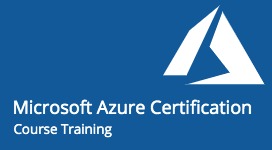More and more of modern businesses pivot on project based processes now. As a result, the certified Project Management Professional (PMP) is increasingly valuable to employers and businesses all over the world. Is it any wonder that students and professionals with PMP certifications are so highly sought after? No matter what stage of your career you are, this certification is a value addition; as are the formulas, tips and tricks that help prepare for this.
PMP formulae
Various PMP formulae relating to project selection methods, critical path methods, PERT analysis with Beta distribution, project cost management, earned value management, estimate at completion and so on can help the student bone up on their study material. Understanding the 5 process groups, the 10 knowledge areas (9 in earlier editions of the PMBOK) and the 49 processes (which have steadily increased from 37 in the first edition to 49 in the sixth, 2017 edition), that make up the latest edition, is the first step towards learning the course material for the certification exam.
5 process groups for project management
A project will have varied objectives; however, the logical progression for each can be structured along similar lines:
-
The initiation group defines the skills and activities required for the project. The initial teams, work phases, budgetary allocations, initial work orders, authorizations or permits needed (if any) are elucidated.
-
The planning process group sets out timelines for reaching goals, defines scope of the project, optimizes individual skill sets for key project goals and creates the infrastructure for effective project management.
-
The execution process group pays close attention to deadlines, enables communication within and outside the project team, plans team needs, maximizes workflow, addresses concerns and deals with issues and complexities that are bound to crop up.
-
The monitoring and control process group explains how to keep the momentum going and meet initial project expectations; helps envisage and head off possible problems and offers quick solutions to problems that do crop up.
-
The closing process group governs the timely closure of the project within its budget allocation. It includes processes such as creating reports and submitting the necessary paperwork, which in turn garners positive reviews and future referrals.
The 10 knowledge areas of project management
-
Project Integration Management envisages the entire project as a unified whole
-
Project Scope Management defines the aims, scale and boundaries of a project
-
Project Time Management helps to create a schedule for the project as well as milestones for each task
-
Project Cost Management governs cost estimations, while balancing project requirements with cost constraints
-
Project Quality Management helps balance time and budgetary constraints with quality control
-
Project Human Resource Management envisages hiring, process allocation and performance assessments
-
Project Communication Management manages communications and keeps all stakeholders in the loop
-
Project Risk Management helps foresee and manage problem
-
Project Procurement Management envisages temporary hires, sub-contracting and possible overruns
-
Project Stakeholder Management was newly introduced in PMBOK’s 5th edition
49 processes of project management
The processes of project management have increased steadily over the years and the 6 editions of PMBOK. What started out as 37 processes identified in the first edition in 1996 are now increased to 49 in the 2017, 6th edition. The first edition which spanned just 180 pages has grown in scope and content to become a voluminous 980 pages in its 6th avatar. While the number of broad process groups remains the same, the number of processes for initiating, planning, executing, monitoring & controlling and ending a project contained within the groups has increased and become more refined.












